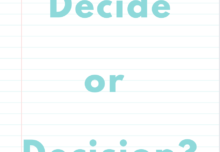Oh, commas. They should be easy to use – after all, their purpose is to reflect how we speak – and yet everywhere I look they’re being horribly abused.
Sometimes they’re in places they have no business in; other times they’re missing.
Perhaps this is understandable. After all, many of us (myself included) were barely taught grammar and punctuation in school. Furthermore, it’s hard to find a simple, easy to read guide that avoids terms such as conjunctive adverbs and coordinating conjunctions.
So to do my part, this is how I wish my school teachers had explained the use of commas to me:
Commas add brief pauses to sentences – but you should only ever use one if the pause is necessary. If you can easily say a sentence out loud without pausing, there’s no need to add a comma.
The three most common reasons to use a comma are if you’re:
- saying more than one point within the one sentence – ie I adore cats, and when I manage to get a large enough house I want to own at least 15 of them.
- writing a list in comma form – ie I like cats, dogs, rabbits and birds.
- adding a description (or as grammatical nerds call it, a modifier) – ie My apartment, which only has one bedroom, is too small to have 15 cats within it.
All three reasons are grammatically correct – but a sentence can be grammatically correct and still read badly. That’s why you should avoid the first two reasons. After all, you should aim to only have one point per sentence – and most lists should be in bullet point form.
However, the second reason to use commas – namely if you’re adding a description – is perfectly acceptable.
A simple rule is this: if you’re adding description to something within the middle of a sentence, you need two commas in just the same way you would use two parentheses – ie Dan, who was born under a bad sign, has a cruel-tempered cat.
If you’re adding a description at the beginning or end of a sentence, however, you only need the one comma – ie Despite being furry and soft to the touch, Dan’s cat was a cruel taskmaster.
If you have problems with using commas correctly, try reading what you’ve written out loud (or at least in your head) to see if the commas (aka pauses) are in the right spot. In my experience, this sorts out most people’s problems.
As for quotations: remember to keep the comma within the quotation marks, so instead of having:
“I love mean cats”, Dan said.
you’ll have:
“I love mean cats,” Dan said.
I’m sure many punctuation and grammar experts would shiver in horror at how I simplified the rules in this article – but that’s all you need to know to avoid most problems.
Grammar and punctuation webinar – half-day session in June
You can write badly while being grammatically correct – and you can write beautifully while breaking the rules.
Most grammar workshops don’t cover this: instead, they’ll teach you esoteric rules that won’t necessarily make you a better writer. And don’t get me started on AI and other grammar tools.
This half-day grammar and punctuation course is practical, down-to-earth and hands on, showing what you need to make your writing as effective as possible.
It runs on 18 June from 9.30am to 12.45pm AEST over Zoom.
Only eight spots are available. Price: $240 (plus GST).




